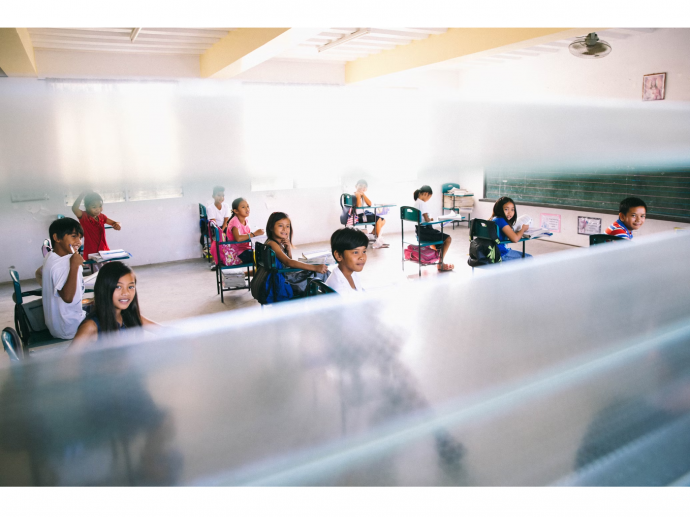Categories more
- Adventures (16)
- Arts / Collectables (15)
- Automotive (37)
- Aviation (11)
- Bath, Body, & Health (76)
- Children (6)
- Cigars / Spirits (32)
- Cuisine (16)
- Design/Architecture (21)
- Electronics (12)
- Entertainment (4)
- Event Planning (5)
- Fashion (44)
- Finance (9)
- Gifts / Misc (6)
- Home Decor (44)
- Jewelry (40)
- Pets (3)
- Philanthropy (1)
- Real Estate (14)
- Services (22)
- Sports / Golf (14)
- Vacation / Travel (60)
- Watches / Pens (14)
- Wines / Vines (24)
- Yachting / Boating (16)
What Parents Should Know Before Choosing an Early Education Path
Published
07/14/2025The importance of early childhood education cannot be overstated. A child’s brain rapidly develops from birth to age eight, forming essential neural connections crucial for learning and behavior. Quality early education programs are tailored to the unique needs of each child, promoting social, analytical, and communication skills that serve as the bedrock for future academic and personal success in child development.
One of the primary options parents consider at this stage is Preschool. Preschools offer a blend of structured learning and play-based activities, designed to develop a child’s cognitive, social, and emotional skills for kids. These programs are often tailored to specific age groups, ensuring that activities and curricula are developmentally appropriate.
Preschools emphasize creating a supportive and inclusive environment, helping to encourage children to teach children to build self-confidence and resilience for their future educational journey as a preschool teacher.
Evaluating Curriculum and Teaching Approaches
When evaluating early education options, understanding the curriculum and teaching strategies approaches is paramount. Various educational philosophies cater to different learning styles and developmental needs, including:
- Montessori method: emphasizes self-directed learning and hands-on activities, fostering independence and critical thinking.
- Reggio Emilia approach: focuses on project-based learning, encouraging children to explore their interests through collaborative projects and creative expression.
- Traditional teacher-led formats: provide structured activities and direct instruction to build foundational academic skills.
Parents should assess the following when evaluating an educational program:
- The flexibility of the curriculum, ensuring it aligns with developmental standards and adapts to the individual needs of children.
- The continuous assessment of child’s progress towards learning objectives.
- The qualifications of the teaching staff, including additional certifications in early childhood education and their educational background, to ensure the program meets educational goals effectively.
The debate between play-based versus academic-focused learning is ongoing, with each approach offering unique benefits. Play-based learning environments encourage creativity and social interactions, essential for emotional and social development. In contrast, academic-focused programs prioritize cognitive skills and academic learning, preparing children for the more structured environment of primary school.
Preschools offer a more structured approach, balancing play with foundational academics to prepare children for formal schooling. They emphasize literacy, numeracy, and socialization, often following educational philosophies like Montessori or Reggio Emilia. Choosing a preschool like Agape that suits your child’s learning style helps foster confidence and a love of learning.
Importance of Facility Visits and Events
Visiting early education centers is essential for choosing the right fit. In-person tours let parents assess the environment, observe student-teacher interactions, learning materials, and classroom layout—details not easily judged online.
Attending events like international school open houses provides direct engagement with educators through tours, presentations, and Q&A sessions. These opportunities help parents understand teaching methods and school policies, while fostering collaboration between families and educators.
During visits, parents should note the center’s inclusivity, cultural awareness, and communication approach to ensure alignment with family values. To explore schedules and fees, visit the international school term dates.
Role of Technology in Early Learning Environments
Digital tools like tablets are now common in early education, enhancing learning through interactive activities that support fine motor development, language acquisition, and social interaction.
Tablets cater to different learning styles, encouraging participation, creativity, and problem-solving skills. For example, devices like those available from M1 can provide children with engaging educational apps and resources, making learning more accessible and interactive. However, screen time must be managed carefully to avoid negative effects. Shared activities with adults can help ensure technology use is meaningful and balanced.
Parents should ask about a school’s technology policies—how digital tools are used in the curriculum and how they track children’s progress. This helps ensure technology supports, rather than hinders, a child’s growth.
Considering Class Size, Teacher Ratios, and Facilities
Practical factors such as student-to-teacher ratios, class sizes, and safety measures play a crucial role in the quality of early education. Regulations exist to establish maximum group sizes and staff-to-child ratios to ensure safety and development. Lower staff-to-child ratios allow for better individual attention, which is essential for children’s emotional and social development.
The recommended ratio for infants is one caregiver for every three infants, with a maximum group size of six. For four-year-old preschoolers, the ideal ratio is one adult to eight children, with a maximum group size of sixteen. Responsive caregiving is facilitated by smaller group sizes, allowing caregivers to meet the unique needs of each child more effectively.
Parents should look for the following when evaluating facilities:
- Environments that support physical play, quiet time, and various learning activities
- Safe and well-maintained facilities to foster a positive learning environment while keeping children safe
- A physical layout and resources that align with their child’s developmental needs and interests
Preparing Questions for School Representatives
Preparing a list of essential questions to ask during interviews or open houses can help parents gather the information they need to make an informed decision. Inquiring about a teacher’s approach to fostering cooperative learning can reveal how well children work together and solve problems. Understanding how a teacher measures student success can provide insights into their strategies for addressing learning gaps and supporting student engagement, including the role of assistant teachers.
Questions parents can ask about the classroom environment include:
- How a teacher manages behaviors and sets expectations for student interactions.
- Exploring a teacher’s educational philosophy to assess alignment with their own educational values and the school’s approach.
- How teachers communicate with parents to indicate the level of parental involvement and support in a child’s education.
Events like an international school open house are ideal opportunities for these conversations. Preparing thoughtful questions helps parents understand the school’s programs, teaching methods, and overall philosophy, ensuring their child receives the best start to their educational journey.
Conclusion
In Conclusion, selecting an early education path requires careful consideration of various factors, including curriculum approaches, facility visits, technology integration, class sizes, and teacher qualifications. By thoroughly researching options and asking the right questions, parents can make informed decisions that support their child’s overall development, ensuring a bright and successful future.
Frequently Asked Questions
Why is early childhood education so important?
Early childhood education is essential as it establishes a foundation for lifelong learning, enhancing children's social skills, cognitive abilities, and emotional growth. This early development significantly contributes to future academic and personal success.
What should I look for when visiting a preschool?
When visiting a preschool, it is crucial to observe student-teacher interactions, the utilization of learning materials, and the classroom layout, as well as to evaluate the center's inclusivity and cultural responsiveness. These factors significantly contribute to a positive learning environment.
How can I evaluate the curriculum of an early education program?
To effectively evaluate the curriculum of an early education program, examine its educational philosophy, flexibility, and alignment with developmental standards, while also considering the qualifications of the teaching staff and their ability to adapt the curriculum to individual children's needs. This comprehensive approach will ensure a thorough assessment.
What role does technology play in early childhood education?
Technology plays a crucial role in early childhood education by enhancing interactive learning experiences and supporting diverse developmental areas. However, it is essential to manage screen time and utilize digital tools effectively to maximize their benefits.
What questions should I ask school representatives during an open house?
It is essential to ask school representatives about their teaching methods, daily routines, and parental involvement to gain valuable insights. Additionally, inquiring about the classroom environment and the school’s approach to transitions can help assess their educational philosophy.

















